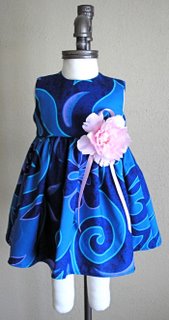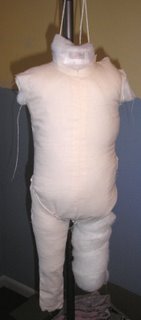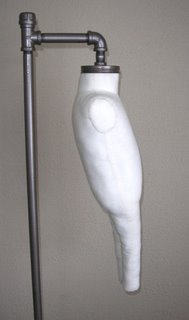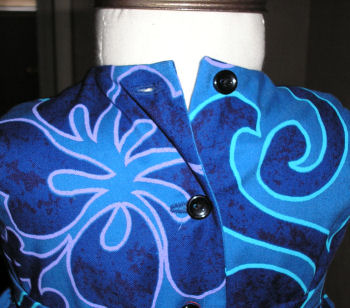June 16, 2006
Saving Money at Outlet Stores
There is an article in the May 2006 Consumer Reports titled Outlet Stores - Where To Shop & How to Save Big Bucks. This is was an interesting article for many reasons. If you are a frequent shopper of outlet stores, you probably have suspected that some of the merchandise is not true factory seconds. More often than not, clothing is created and merchandised specifically for the outlet store. This article compares clothing from a regular store versus an outlet. You may be surprised at the quality available there (better than you might think). Even though this article does not specifically address children's clothing, an outlet store may be a great place to save money.
BTW, an outlet store is not necessarily the same as a discount store such as TJMaxx or Ross Dress for Less. Those stores are liquidators. They buy overstock, end of season, and customer returns. I suspect that those stores are selling merchandise they manufacture themselves, although I don't have proof. There are a few brands I have never seen anywhere else but those stores. In any event, you can find really great deals and good merchandise.
The general industry opinion is that placing your product into a TJMaxx may devalue the brand. I wonder how that is true when you can find high-end designer children's labels such as Ralph Lauren, Donna Karen, or Plum Pudding. I have rarely found obvious defects.
This is a very interesting article. A subscription is required to read this article on the web. They do have a free page that gives tips for outlet shopping. Check your local library for the full article.
Labels:
Clothing for Children,
Outlets,
Saving Money,
Shopping,
The Retail Side
Making a dress form pt. 5 : Finished!

When I started this project, I assumed it would be rather simple. Draft a pattern with no ease and stuff it. Instead, I had to adjust my pattern many times. Plus I had to solve problem of creating an inner structure and stand. Wow, it was a lot of work!
I am generally pleased with how my form turned out. As in all experiments there are many lessons learned. The first, the form companies are charging a fair price. I saved money in materials, but it took me a lot of time and two attempts to get my form right. Second, my form may have a short life. Not all of the materials are the most durable. I imagine I will have to do repairs in the future. Just in case I decide to do this again, I am keeping my patterns!
Earlier I had posted about Aldrich's neck-base measurement being too big. I ended up not altering my form pattern - forgetfulness on my part. I still think her measurement is still a little too big, but as you can see my dress does fit. My earlier problems were from over-stuffing. I kept tight control of the stuffing of my final form.
Someday, I will purchase a real form. For now this one works well. It matches my measurement requirements fairly close. And it does fit my dress!
June 06, 2006
Making a dress form pt. 4 : padding the form with batting
From the picture below, you can see I have made some progress. I have started to pad the papier mache form with batting. I used my original draft from my first form and modified a few seams. In this picture I am trying on the leg - it needed further adjustment, along with the front torso. I also took note on what areas needed a bit more padding. The form is suspended from the stand by a cotton yarn. I will be putting weights into the bottom of the legs to help give it more stability. Already, this version is much better than my previous one, but still not as good as the professionally made forms.


Labels:
Dress Forms,
Patternmaking,
Personal Projects,
Proportion
May 27, 2006
Making a dress form pt. 3 : Starting with a good base
I hit upon a bit of inspiration while searching the net for info on how to make a dress form. I kept running into the terms papier mache. The professional forms have a papier mache center. At Vintage Sewing (link no longer works) there is a demonstration on how to pad your own form.
Papier mache is a simple medium to work in, just messy. I bought an all vinyl doll to use as a base. It has smaller measurements than I need - which is perfect to later pad it out. I pulled the doll apart, sprayed it with oil and wrapped plastic wrap around the body. Next, layers of paper and glue. I then cut it off the body and slashed and spread it apart to get better proportions. More layers of glue and paper....
I have the body, done and I am now working on the legs. No pictures yet, but soon. Hopefully, I can start doing the padding next week!
Papier mache is a simple medium to work in, just messy. I bought an all vinyl doll to use as a base. It has smaller measurements than I need - which is perfect to later pad it out. I pulled the doll apart, sprayed it with oil and wrapped plastic wrap around the body. Next, layers of paper and glue. I then cut it off the body and slashed and spread it apart to get better proportions. More layers of glue and paper....
I have the body, done and I am now working on the legs. No pictures yet, but soon. Hopefully, I can start doing the padding next week!
Labels:
Dress Forms,
Patternmaking,
Personal Projects,
Proportion,
Sizing
May 18, 2006
Making a dress form pt. 2 : How to suspend it and checking measurements
I made some more progress this week on my infant dress form (sized 3mo). I created a stand from bits and pieces from the hardware store and spray painted it to make it uniform. I love my stand! The form, on the other hand, has presented some problems - ones I am not quite sure how to work out.
From the front, the form actually looks ok. The dress is one of my Hawaiian dresses, sized 3 mo. I know this dress fits because I have tried it on children. It may be hard to tell in these pictures, but my first problem is the neck size. I drafted my pattern from Aldrich's measurements. Her neck base is at least 1" larger in circumference than all of my other size charts. IMO, it is too big and I will be making it smaller in my next draft. The neck of my dress is on the small side, however, and I will be adjusting it in my next line, although not much. When I did my fittings, the moms actually commented on how the neck fit better than most RTW (which are usually too big!).
In these pictures, you can see how my form swings out from the bottom. The only adjustment I can think to make is to drop the back of the neckband at least 1/4", thus pulling the form into a straigher line. You can see how this may cause problems with checking the skirt.
You can see how large the neck size of my form is in comparison to my dress in this picture.
Another BIG problem is my measurements are all off. The girth measurements match a 12mo. The vertical trunk measurement matches a 6mo. I drafted my pattern in a 3mo with no ease. I can only assume that my measurements were thrown off from the fabric stretching while stuffing. This is probably why the professional forms use a heavy-weight linen fabric.
I think this project still has potential, but it is back to the drawing board. Plus, I need to try and find a medium/heavy-weight linen. I would appreciate any suggestions that you patternmakers may have out there?!
My other big project is designing my Fall/Holiday dresses. I am thinking about some red silk holiday dresses, just need to order some fabric and try not to fall too behind...
From the front, the form actually looks ok. The dress is one of my Hawaiian dresses, sized 3 mo. I know this dress fits because I have tried it on children. It may be hard to tell in these pictures, but my first problem is the neck size. I drafted my pattern from Aldrich's measurements. Her neck base is at least 1" larger in circumference than all of my other size charts. IMO, it is too big and I will be making it smaller in my next draft. The neck of my dress is on the small side, however, and I will be adjusting it in my next line, although not much. When I did my fittings, the moms actually commented on how the neck fit better than most RTW (which are usually too big!).
In these pictures, you can see how my form swings out from the bottom. The only adjustment I can think to make is to drop the back of the neckband at least 1/4", thus pulling the form into a straigher line. You can see how this may cause problems with checking the skirt.
You can see how large the neck size of my form is in comparison to my dress in this picture.
Another BIG problem is my measurements are all off. The girth measurements match a 12mo. The vertical trunk measurement matches a 6mo. I drafted my pattern in a 3mo with no ease. I can only assume that my measurements were thrown off from the fabric stretching while stuffing. This is probably why the professional forms use a heavy-weight linen fabric.
I think this project still has potential, but it is back to the drawing board. Plus, I need to try and find a medium/heavy-weight linen. I would appreciate any suggestions that you patternmakers may have out there?!
My other big project is designing my Fall/Holiday dresses. I am thinking about some red silk holiday dresses, just need to order some fabric and try not to fall too behind...
Labels:
Golden Mean,
Patternmaking,
Personal Projects,
Proportion,
Sizing
Subscribe to:
Posts (Atom)






